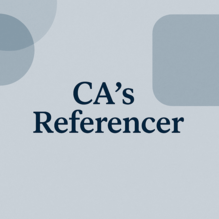ICAEW shares lessons learned to boost audit quality
May 28, 2025
As part of its work in monitoring the quality of audits, ICAEW is sharing insights to help firms tackle common weaknesses and identify potential causes.
In 2024, ICAEW’s Quality Assurance Department visited 401 audit firms and reviewed work on 790 audits. It uses these insights to highlight common areas of difficulty and support in how to address them.
ICAEW’s 2025 audit monitoring report, published on 27 May, confirms that 67% of audits it examined were either ‘good’ or ‘generally acceptable’, with this figure rising to 90% when looking at audits performed by the four largest firms. The percentage of audits requiring significant improvement remained steady at 10%.
While the top-level figures suggest a slight decrease on 2023 ratings, direct comparison is impossible because different audit firms are visited each year.
Nick Reynolds, ICAEW Professional Standards Head of Audit, explained: "Though we can’t compare results year-on-year, the majority of audits we reviewed continued to remain good or generally acceptable. Our reviewers select the most complex files so overall, audit quality is likely to be higher.
“Although we see a lot of good audit work across our wide range of registered firms, we know that some continue to struggle due to a variety of factors including inability to attract and retain good audit staff. Larger firms fare better in the recruitment market, with stronger overall audit quality results.”
Addressing audit weaknesses
The monitoring process offers an opportunity for ICAEW to identify any areas of the audit process where firms might benefit from additional support to help them build and maintain high standards. Alongside offering insights into the potential root causes of audit quality issues, the report outlines six common weakness and potential existing support:
1. Risk assessment
ISA 315 (revised 2020) introduced a range of changes, with a clearer emphasis in some areas, such as the understanding of IT systems and controls. Where there are complex IT systems, the ‘understanding’ may require more specialist expertise within the audit firm, which is not always recognised.
ICAEW also highlighted that where there is insufficient justification of judgements leading to ‘low risk’ assessments, quality assurance teams may have concern about the lack of underlying audit evidence in those areas.
ICAEW resource: Risk assessment internal control and external audit
2. Fraud and error
Some audit firms have embraced technology to assist in their work on journal entries to address the risk of management override. However, the auditor still needs to carefully consider appropriate parameters in the software to identify ‘outliers’. ICAEW has seen some cases where firms use default settings that may be inappropriate for that particular audited entity.
3. Estimates and judgements
Whether dealing with accounting for a long-term contract, or valuation of an intangible, the auditor must understand the substance of the product or asset behind the numbers, and how the numbers in the financial statements are influenced by changes in assumptions and other uncertainties. ICAEW warns that simply completing a checklist will offer limited assistance.
4. Experts and service organisations
ICAEW concludes that good audit quality is seen when audit teams gain good understanding of third parties and service organisations, reviewing details of assumptions applied or controls in place at the third party, and hold discussions with the third party about their work
5. Substantive analytical procedures
Substantive analytical procedures – predictive audit testing where assumptions are anchored in evidence-based criteria – require experience. ICAEW’s monitoring suggests that too frequently inexperienced staff will perform this work poorly. Monitoring has found examples where simple comparisons to previous years are used or generic inflation figures are applied, which do not provide the quality of audit evidence required.
6. Sampling
The removal of so-called sample size ‘caps’ from commercial audit methodologies in recent years has caused some issues for firms. ICAEW would encourage all firms to ensure that they fully understand how their methodology reflects all elements of ISA 530 – which not only include statistical/calculated sample sizes, but also judgemental sampling options.
ICAEW’s more significant concerns about sampling, centre around:
very low, unjustified sample sizes;
reductions in sample size taken for non-existent evidence from substantive analytical procedures and/or operating effectiveness of controls; and
a sampling methodology applied where there is no chance of selection from a material sub-set of the population.
More audit monitoring insights
Alongside outlining potential weaknesses and possible root causes, the report contains a spotlight on smaller firms and an update on ISQM 1 implementation. The section on smaller firms includes case studies that reveal contrasting outcomes depending on how smaller firms engage with quality standards.
Following on from the audit monitoring report, ICAEW’s Quality Assurance Department is sharing additional insights from its audit monitoring activities over the coming months through a series of free, hour-long webinars:
Smaller audit firms and less complex audits: 3 July
Larger audit firms and complex audits: 10 July
ISQM 1 implementation: 23 September
ICAEW also uses its annual monitoring processes to inform its wider training offering, such as its training films, the latest of which launched last week. Crossing the line explores key audit themes in the high-stakes worlds of football. The story follows two audit teams responsible for navigating complex accounts and how their paths intertwine in unexpected ways.
[ICAEW Insights]


